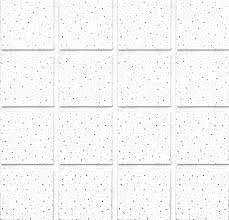Dec . 30, 2024 11:11 Back to list
ceiling grid insulation
Understanding Ceiling Grid Insulation A Guide to Effective Thermal Management
When it comes to maintaining the ideal indoor environment, insulation plays a crucial role. Among various types of insulation materials, ceiling grid insulation is particularly significant, especially in commercial and industrial buildings where ceiling structures often incorporate grid systems. Understanding ceiling grid insulation can help ensure that facilities remain energy-efficient, comfortable, and cost-effective.
What is Ceiling Grid Insulation?
Ceiling grid insulation refers to the materials used to insulate the space between the ceiling grid and the roof or upper level of a building. The ceiling grid system typically comprises metal or wood frameworks that support ceiling tiles or panels, allowing easy access to utilities hidden within the ceiling void. Insulating these areas helps regulate temperature, minimize energy consumption, and reduce sound transmission.
Importance of Ceiling Grid Insulation
1. Energy Efficiency One of the primary benefits of proper insulation is its ability to enhance energy efficiency. By preventing heat loss in the winter and keeping interiors cool in the summer, ceiling grid insulation can significantly reduce heating and cooling costs. This is especially crucial in buildings that house sensitive equipment or maintain specific temperature requirements.
2. Comfort A well-insulated ceiling contributes to a more comfortable indoor environment. Without effective insulation, buildings can suffer from hot or cold spots, drafts, and moisture issues. Ceiling grid insulation helps maintain a consistent temperature throughout the space, enhancing occupant comfort.
3. Noise Reduction Ceiling grid insulation can also play a vital role in sound attenuation. In environments such as offices or educational institutions, noise from outside or adjacent spaces can be distracting. Insulating ceiling grids helps absorb sound, providing a quieter atmosphere for occupants.
4. Condensation Prevention In many cases, moisture can accumulate in the ceiling cavity, leading to significant issues, including mold growth and corrosion of metal components. Proper insulation minimizes condensation risk by keeping the temperature of the insulated surfaces above the dew point.
Types of Ceiling Grid Insulation Materials
Several types of insulation materials can be used in ceiling grid applications
ceiling grid insulation

1. Fiberglass Insulation This is one of the most common insulation materials due to its excellent thermal performance and sound-absorbing properties. It comes in batts or rolls, which can be easily installed within ceiling grid systems. 2. Foam Board Insulation Rigid foam boards are effective at providing high insulation values with relatively thin profiles. They are often used in commercial settings requiring additional insulation without taking up too much space.
3. Spray Foam Insulation Spray foam offers superior insulation and air sealing capabilities. It can be applied directly to irregular surfaces and can expand to fill gaps and cracks, providing an effective barrier against air leaks.
4. Mineral Wool Insulation Also known as rock wool, this insulation material is fire-resistant and provides excellent soundproofing qualities. It is less prone to moisture absorption and is often used in building projects to enhance safety.
Installation Best Practices
To achieve optimal results, proper installation of ceiling grid insulation is essential. Here are some best practices to consider
- Ensure Proper Fit Insulation materials should fit tightly within the ceiling grid to prevent air leaks. Gaps can significantly reduce the effectiveness of insulation. - Seal Air Leaks Use caulk or foam sealants to close any gaps or openings around fixtures, ducts, or electrical wiring that penetrate the ceiling.
- Moisture Management Consider integrating vapor barriers in areas prone to high humidity to prevent moisture accumulation within the insulation.
- Regular Maintenance Periodically inspect the insulation for damage, wear, or mold growth. Maintenance ensures that insulation continues to perform at peak efficiency.
Conclusion
Ceiling grid insulation is a vital component of building design that significantly impacts energy efficiency, comfort, and acoustics. By selecting the appropriate insulation materials and ensuring proper installation, property owners and managers can enhance the overall performance of their buildings. Investing in effective insulation not only protects the building’s structure but also contributes to a sustainable future by reducing energy consumption and environmental impact. Proper ceiling grid insulation represents not merely an afterthought but a foundational element of responsible building management.
-
Quality Ceiling Trap Doors & Access Panels | Easy & Secure AccessNewsAug.30,2025
-
Durable Ceiling T Grid Systems | Easy InstallationNewsAug.29,2025
-
PVC Gypsum Ceiling: Durable, Laminated Tiles for Modern SpacesNewsAug.28,2025
-
Pvc Gypsum Ceiling Is DurableNewsAug.21,2025
-
Mineral Fiber Board Is DurableNewsAug.21,2025
-
Ceiling Tile Clip Reusable DesignNewsAug.21,2025







